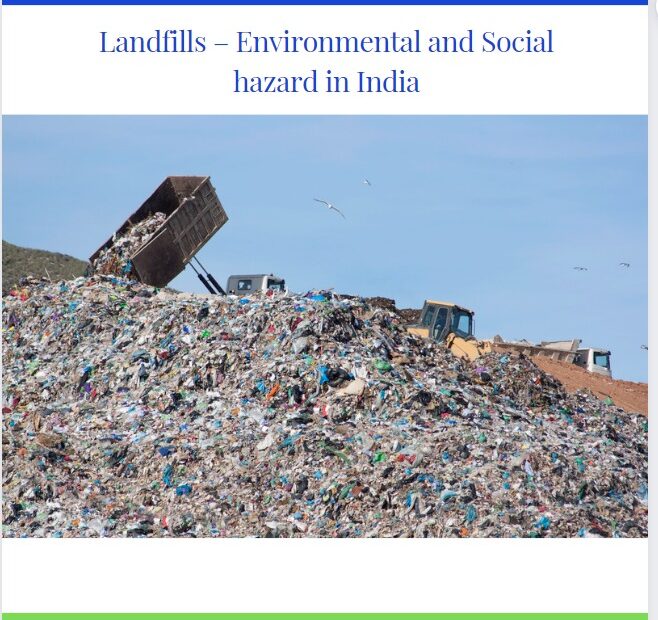On a daily basis, we tend to generate a lot of waste. This waste consists of discarded household items like plastics, paper, clothes, food waste, e-waste, etc. This waste is usually collected by the city municipality and thrown in the pre-assigned sites called landfills. Landfills are large areas, usually outside the city, created to dump all our household and commercial rubbish. Landfills are meant to keep urban dwellings and communities clean and prevent disease transmission. Ideally, landfills are giant pits, designed with many layers of soil, sand, and plastic. This helps to decompose biodegradable waste, absorb contaminants and protect the surrounding soil and groundwater. Once such a landfill reaches its capacity, landfill reclamation is done by covering it with soil for several feet, and trees are planted.
However, that is hardly the case, especially in developing countries like India. Landfills here are treated as just dumping grounds and do not serve their true purpose; instead, it creates many environmental and social problems. Due to the lack of waste segregation practice, many times, hazardous waste also ends up in such sites and pollutes air and water. Also, the decomposition of organic waste leads to methane generation, according to a study by JMI university Delhi, “India is ranked second in methane emissions from landfills, producing 16 Mt CO2 eq per year, and estimated to increase to almost 20 Mt CO2 eq per year by 2020’’.
According to a WRI study, some major landfills in India, such as Deonar (Mumbai), Bhalswa (Delhi), Jawaharnagar (Hyderabad), Mavallipura (Bengaluru), etc, are two-three decades old and receive 2000 – 9000 tons of solid waste daily. The decomposition of decades-old mixed waste causes environmental and social damage such as
Environmental damage –
- Climate change – Methane released from landfills has a great global warming potential which is 23 times greater than that of the same amount of carbon dioxide.
- Water pollution – Leachate, a liquid produced by landfill sites contains ammonia and toxins such as mercury. This leachate can seep into the ground and contaminates water bodies causing a threat to human and aquatic life.
- Biodiversity loss – The creation of landfills requires a large area which means clearing out forests or fields leading to the destruction of natural habitats of many species.
- Air pollution – Apart from methane emissions, many other toxic gases are released from landfills and pollutes its surrounding air.
Social damage –
- Health Hazard – Prolonged exposure to emissions from landfills can cause breathing problems, asthma, and infections. Rag pickers working in the landfill and slums (due to low prices slums are usually formed near big landfills) are at greater risks of getting such health problems.
- In the surrounding areas, a landfill causes bad odour, smoke, bugs, and pests that affects day to day life of nearby dwellers.
Taking preventive measures and ensuring proper management of landfills can help reduce their harmful effects on the environment and society. Nowadays, technologies are coming up that allow capturing of methane released in the landfills, which can be converted into fuel to power industries and vehicles. In the US, several landfill operators are collecting methane and converting it into natural gas to be used as fuel. Enabling such measures and technologies in India can provide ample economic opportunities along with restoring the environment.
Apart from this, preventive measures such as recycling, composting, waste segregation, and lifestyle changes can help improve our country’s overall waste management system. Recycling and composting can help in reducing the amount of waste that ends up in landfills. Practicing waste segregation at the source can prevent hazardous and non-biodegradable waste from ending in landfills and being processed to generate economic value. If we want to reduce the areas of landfills growing larger or even better if we try and eliminate landfills, we will not only impact human health but also the entire planet.
Sources –
https://wri-india.org/blog/living-near-urban-landfills-india
https://www.joingoodside.com/blog/landfills-global-warming-methane
